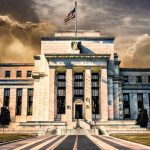Central Banks News Today: Rob, Cheat, Repeat — The Sacred Cycle of Control
Nov 7, 2025
Every empire finds a way to tax its people without consent. The modern method isn’t conquest—it’s monetary policy. Central banks, led by the Federal Reserve, print, lend, and manipulate under the banner of “economic stability,” while quietly redistributing wealth from workers to asset holders. They call it macroeconomics. You feel it as rent hikes, shrinking paychecks, and rising debt.
The polite term is “monetary expansion.” The accurate one is institutionalised theft.
1. The Old Trick, Modernised
Mayer Amschel Rothschild’s alleged line still defines our age: “Give me control of a nation’s money and I care not who makes its laws.” The truth of that statement is measurable. Whoever controls the issuance of money controls the cost of survival. And for over a century, the Federal Reserve and its global counterparts have turned that control into a weapon of class engineering.
The numbers don’t lie. In 2008, the U.S. money supply (M2) was roughly $7.6 trillion. By 2024, it passed $21 trillion—a 176% increase in 16 years. Meanwhile, the median wage adjusted for inflation barely budged. The S&P 500 quadrupled. Real estate tripled. Rent rose 135%. The result? A permanent transfer of purchasing power from the working class to asset owners.
This is not monetary “policy.” It’s a soft coup.
When the 2008 crash hit, the Fed’s balance sheet exploded as it bought trillions in toxic assets from the very banks that caused the disaster. In 2020, faced with a pandemic, they did it again—printing over $5 trillion in less than 24 months. Wall Street got liquidity. Main Street got inflation.
2. The Lie of Low Inflation
For decades, central bankers swore inflation was under control. The Consumer Price Index (CPI) became their holy metric—a number so easily manipulated it may as well be fiction. They conveniently exclude “volatile” essentials like food and energy, as if people can live without eating or heating.
The result? The public was convinced inflation was “2%” while the cost of living quietly ballooned. Between 2000 and 2024, the average home price in the U.S. rose 150%, college tuition soared 180%, and healthcare premiums tripled. Yet the Fed insisted inflation was “contained.”
Contained for whom?
In 2022, when inflation finally ripped past 9.1%, Jerome Powell’s Federal Reserve acted “surprised.” They weren’t. They were cornered. Years of artificially low interest rates had inflated the largest asset bubble in human history. Any rate hike threatened the debt-fueled fantasy economy they built. So they hiked, slowly—too late—and the public bore the brunt while Wall Street front-ran the trade.
3. The Prime Directive: Protect the Banks, Not the People
The central banks’ first and only loyalty is to the financial system itself. Their “dual mandate”—full employment and stable prices—is marketing. The true mandate is solvency for the banks that sit closest to the spigot.
During 2023’s mini-banking crisis, the Fed quietly rolled out the Bank Term Funding Program (BTFP)—a trillion-dollar lifeline allowing banks to swap underwater assets at full face value. Translation: bailouts for the elite, hidden behind technocratic jargon. The average citizen, meanwhile, was told inflation relief was “progressing.”
The pattern is constant:
- 2008: Banks gamble, lose, get bailed out.
- 2020: Corporations issue junk debt, get liquidity support.
- 2023: Regional banks implode, Fed invents new lending window.
- 2024: Consumer debt hits record highs, interest on credit cards exceeds 24%, and central banks tighten liquidity “for stability.”
The stability they preserve is not yours.
4. The Inflation Game: Rob, Devalue, Repeat
Inflation is taxation without legislation. It erodes purchasing power quietly, year after year, redistributing wealth toward those who own appreciating assets. From 1970 to 2024, the U.S. dollar lost 88% of its purchasing power. One dollar from Nixon’s era now buys twelve cents of goods. Yet every central banker still calls this “a sign of a healthy economy.”
The victims are predictable: savers, retirees, wage earners, and small businesses. The winners are equally predictable: asset managers, debtors, and governments drowning in liabilities. Inflation reduces the real value of debt, which is why every major government secretly welcomes it.
Even now, the United States pays over $1 trillion annually in interest on federal debt. Inflation lowers that burden by stealth—each dollar owed repaid in weaker currency. Your paycheck absorbs the cost.
5. How the Illusion Persists
The average person doesn’t rebel because the system rewards participation in their own deception. 401(k)s rise. Home values inflate. A false sense of prosperity blooms—until the next correction wipes out the gains, and the cycle resets.
The banks lend into the bubble. The Fed supplies liquidity. The public consumes and borrows, mistaking leverage for wealth. When it collapses, the losses are socialised, and the next generation inherits the bill.
This is not a conspiracy. Its structure.
The Bank of England pioneered the model in the 17th century—government debt monetized through central banking. The Rothschild dynasty perfected it in the 19th. The Federal Reserve industrialized it in the 20th. And in the 21st, it became global religion—every central bank now a priesthood managing the faith of markets.
6. The Consequence: The Hollowing of Nations
What central banks have created isn’t prosperity—it’s dependency. In the U.S., 60% of citizens now live paycheck to paycheck. In Europe, real wages fell 3% in 2023 even as the ECB raised rates to “control inflation.” Japan’s yen collapsed 25% in two years. Argentina’s inflation hit 140%. The global poor are the collateral damage of monetary “innovation.”
Meanwhile, the top 1% owns nearly 33% of all global wealth. The top 0.1% owns as much as the bottom 90%. Monetary policy didn’t correct this—it caused it. When money creation flows through the financial system before it reaches the public, it multiplies inequality by design.
Central banks created a world where your savings decay, your assets inflate beyond reach, and your labor buys less every year. They have turned the concept of money—once a store of value—into a decaying claim on survival.
7. The Quiet Rebellion Begins
The antidote isn’t rage—it’s clarity. You can’t reform central banking, but you can refuse to be harvested by it. The more citizens understand the game, the less power it holds.
- Own what can’t be printed—precious metals, productive land, and cash-flowing businesses.
- Use debt strategically, not emotionally. Borrow only for assets that outperform inflation, never for consumption.
- Withdraw from financial dependence. Build liquidity when others borrow. Accumulate when others panic.
Inflation feeds on ignorance. Independence starves it.
The Counterstrike: Beating the Central Bank Cartel with Mass Psychology and Real Assets
Central banks run the world’s most profitable illusion: they convince billions that the problem is inflation, when the real crime is control. Every interest rate, bailout, and liquidity injection isn’t economic management—it’s behavioural conditioning. They don’t need soldiers to enforce compliance; they use credit scores, market fear, and manipulated hope.
To beat them, you don’t protest—you detach. You play the opposite rhythm. You understand the crowd, then step outside it. Mass psychology and hard assets are your twin shields.
1. The Cartel’s Real Power: Mood Management
Central banks no longer control the economy; they control sentiment. Every press conference, every rate hike or pause, is engineered theater. In 2020, they said “liquidity support.” Markets soared. In 2022, they said “higher for longer.” Markets crashed. In 2023, they whispered “soft landing.” Stocks rebounded. The data barely changed—but the mood did.
That’s the secret: if they can steer emotion, they can steer behavior. And if they can steer behavior, they can maintain the illusion that fiat currency still holds moral authority.
This is how they harvest you. Not through policy, but through your reactions to policy.
The crowd panics when they tighten. The crowd celebrates when they ease. Both are traps. They want binary reactions. Predictable people are profitable people.
The antidote is detachment—calm, data-backed disobedience.
2. Use Mass Psychology Against Them
Markets are mirrors of collective emotion. During inflationary regimes, fear and greed alternate like tides. To profit, you must move opposite those tides—not heroically, but mechanically.
When inflation spikes, people flee into cash, convinced safety lies in currency. That’s when cash loses the most value. When inflation cools, they chase speculative assets again—exactly when liquidity is drying up.
Mass psychology is predictable because it’s biological. Most investors would rather lose with the crowd than win alone. Your job is to do what disgusts or terrifies them—when it still hurts to do it.
- In 2009, the market was a graveyard. The brave tripled their capital in five years.
- In 2016, silver was despised. It doubled within 12 months.
- In 2020, oil traded below zero; three years later, it was up 700%.
If you waited for “stability,” you missed it all. The crowd only buys courage when it’s riskless—and by then, it’s worthless.
The formula is old, but it works:
- Buy when pessimism feels unbearable.
- Hold when hope feels easy.
- Sell when everyone becomes a genius.
The central banks engineer the moods that trigger these phases. You win by recognising the manipulation rather than resisting it emotionally.
3. Real Assets: Your Fortress in the Fire
Paper money burns fast. Real assets survive the blaze. The list hasn’t changed in 2,000 years: precious metals, productive land, and income-generating enterprises.
Gold, for instance, has been dismissed, demonized, and resurrected in every century. From 2003 to 2024, it rose from $350 to $2,350—a 571% increase—while the dollar lost half its real purchasing power. Even after corrections, gold has preserved wealth across wars, recessions, and monetary resets. It is not “ancient.” It is honest.
Silver remains even more asymmetric. It trades at roughly 85:1 to gold—far above the historical average of 15–30:1. That spread alone signals opportunity. When fear returns, silver’s volatility becomes a weapon, not a risk.
Real estate, too, still matters—but only when bought right. Housing isn’t a hedge when bought at the peak with debt; it becomes a chain. But land, especially productive or resource-rich land, is a genuine inflation hedge. You can’t print acreage.
Equities still have their place—specifically companies producing tangible essentials: food, energy, transport, and defence. During stagflation in the 1970s, these sectors crushed everything else. They will again. The digital crowd may mock them as “boring,” but boredom is the mother of compounding.
4. The Death of the Consumer
Inflation and debt feed on the same nutrient—consumption. Every government stimulus, every “credit expansion,” is bait. You are told to “spend to save the economy.” Translation: keep the machine fed.
But the moment you stop consuming compulsively, you break their chain. The system needs velocity—money circulating, cards swiping, ads converting. When you withdraw, even slightly, the gears grind more slowly.
Living below your means is not austerity—it’s rebellion. It starves the debt economy.
In 2024, the average American carried over $61,000 in personal debt, including credit card, auto loan, and mortgage debt. Total household debt hit $17.7 trillion. Meanwhile, the average savings rate dropped below 4%.
The result is dependence disguised as prosperity. To fight inflation, central banks need you to be indebted. To beat them, you must become invisible to their leverage.
Pay off variable-rate debt. Delay nonessential purchases. Invest every freed dollar into assets that grow faster than the printing press can debase. That’s not theory—it’s survival math.
5. The Digital Trap: The Coming CBDC Era
Central banks are now testing Central Bank Digital Currencies (CBDCs)—programmable money with surveillance baked in. They’ll sell it as convenience. They’ll promise instant transactions and fraud protection. But the hidden feature is control.
A CBDC allows them to dictate where you can spend, what you can buy, and when your money expires. Think of it as a credit card issued by the state with a morality clause. If you buy too much fuel, travel too often, or invest “improperly,” they can penalise you instantly.
This is not paranoia. Over 130 countries are developing or piloting CBDCs. The Bank of England calls it the “digital pound.” The European Central Bank calls it “the digital euro.” The Fed calls it “FedNow.” Different names, same leash.
Your defence is decentralisation: physical metals, private wallets, peer-to-peer transactions, and local trade. The more tangible your wealth, the harder it is to censor.
6. The Psychological Edge: Silence, Patience, Precision
The biggest victory over central banks isn’t profit—it’s peace of mind. Once you detach from their dopamine loop of panic and stimulus, your wealth compounds quietly.
Don’t chase yield; chase endurance. Don’t react to headlines; study sentiment. The average investor checks their portfolio 10 times a day. The best is to check it quarterly. The longer your time horizon, the smaller their influence.
This is how you invert the pyramid:
- You save when others borrow.
- You buy when others despair.
- You rest when others chase.
Central banks weaponize noise. Silence is your counterattack.
7. The Common Sense Revolution
Common sense beats PhDs in distorted systems. Inflation, debt, and bubbles all thrive on collective amnesia. Common sense is remembering that wealth doesn’t appear—it’s transferred.
Here’s the blueprint for survival and quiet dominance:
- Hold real money. Gold, silver, productive equity, land.
- Kill bad debt. No revolving credit, no lifestyle loans.
- Ignore the noise. Media sells emotion, not truth.
- Use mass psychology. Fear is a buy signal. Mania is an exit.
- Stay independent. No one saves the cautious last—they save themselves first.
This isn’t cynicism. It’s arithmetic morality.
8. The Reckoning Ahead
The system is stretched. Global debt now exceeds $315 trillion, more than 330% of world GDP. Inflation “cooled” in 2024 only because liquidity was choked temporarily. The next crisis—whether in real estate, sovereign bonds, or digital currency transition—will demand another bailout. They’ll print again. Prices will soar again. And those holding real assets, low debt, and emotional discipline will walk through the wreckage richer, freer, and unafraid.
Central banks are not omnipotent. Their power ends where your dependence does.
History’s pattern is merciless: Rome debased its silver; Weimar burned its marks; Argentina repeats the loop every decade. The outcome is always the same. The survivors aren’t the loudest—they’re the calmest.
So when the next inflation wave hits, and the headlines scream “unexpected,” don’t panic. You already know the script. Buy when they cry. Hold when they mock. Sell when they preach.
The banks write the story. You control the ending.
That is how you win.
Unveil the Hidden Gems: Explore More











